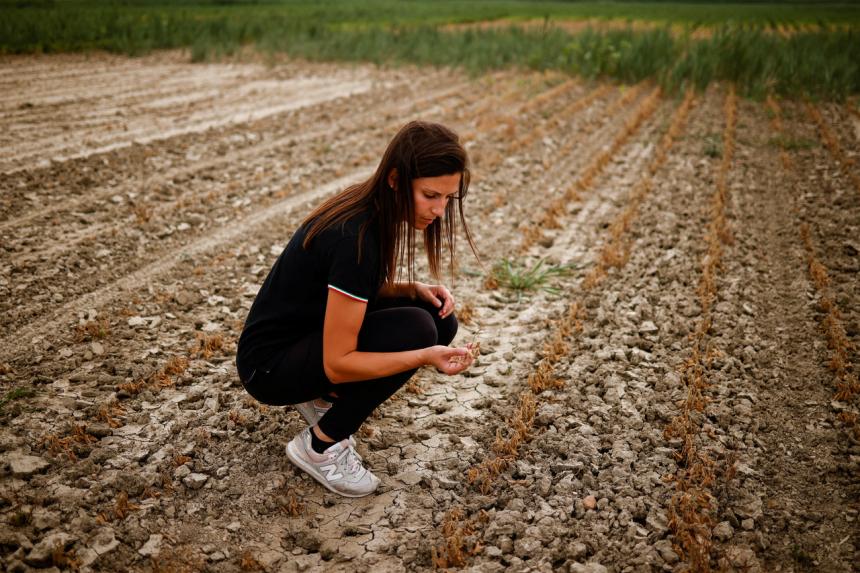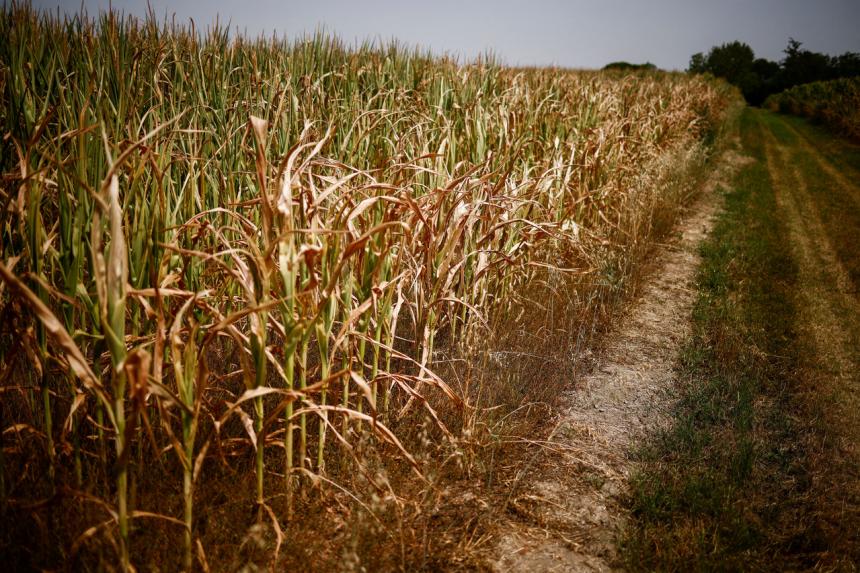SCARDOVARI, Italy (REUTERS) - The worst drought in 70 years has meant salt water from the Adriatic sea is flowing back into the sluggish Po, Italy's longest river, doing further damage to crops hit by an early summer heatwave.
The flow of sea water into the Po makes irrigation almost impossible in parts of Italy's agricultural heartland, as it risks burning the already parched crops.
Some 4km from where the Po meets the sea in the small village of Scardovari in north-east Italy, waves crash through the anti-salt barriers and push downstream.
"You can see what happens, salt water enters the water table. There are parts of the fields with no plants and others where they grow regularly," said Mr Giancarlo Mantovani, director of a group called "Reclaiming the Po" that tries to protect the river.
"If there is no rain in the next 10 or 15 days, the crops that are not yet lost will be gone. At this stage, we are progressively losing the harvest," he added.
The Po runs for more than 650km from west to east across the north of Italy, a region which accounts for around a third of the country's agricultural output.
The river is suffering the effects of a lack of winter snow compounded by a baking early summer. Large areas of sandbanks lie exposed on stretches of the river as the water levels drop and its flow slows, making it easier for sea water to encroach.
Not far from the Po delta, Ms Federica Vidali, 29, walks through a dried out field of soya plants where she works as an agricultural entrepreneur.
"Without rain, the water flow of the Po has dropped considerably and so it's not enough to counteract the rising sea water in the river. This means that in our (irrigation) channels we have salt water that is not suitable for irrigation," she said.
Ms Vidali is also a beekeeper and the drought is also damaging honey production, because it means alfalfa and soya bean flowers have no nectar for the bees to feed on.
"I am trying to be optimistic but at the moment when it doesn't rain and you see the whole year of work lost, you become afraid, you are sad," she said.
The outlook is similarly bleak further inland in the province of Pavia, near Milan, where there is simply not enough water available to make up for the lack of rain.
Walking through one of his dried-out rice fields, farmer Luigi Ferraris surveyed the damage.
"Rice is harvested in September and October, we still have July and August ahead of us - two hot months - my worry is that if it doesn't rain...".
The lower production this year will impact next year's supply and the rice used for seeding, Mr Ferraris said, predicting the crisis caused by this drought would continue for at least two years.
"I am not saying it's a catastrophe, but we're nearly there," he added.



